7 Reasons Why Potential Customers Refuse to Read Your Business Blog (and what to do about it)
Nearly everyone — from search and social media — exits your blog within 20 seconds. No one reads your content, much less share them.
What’s the problem?
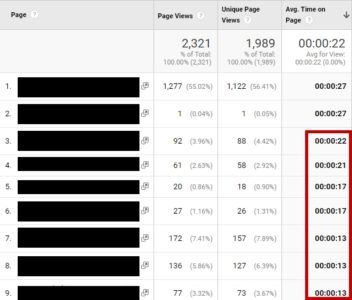
#1. Your content is full of fluff and adds no value
Does your content give any value to your visitors? Does it demonstrate your expertise to potential customers?
Would you want to read your own content?
If you’d rather read your competitor’s content, you have your answer. Don’t waste resources putting out shallow content with obvious insights. The internet is full of that.
Many businesses — new to content marketing — create content just to check off a bx in their online marketing list. They kickstart a blog with neither a clear objective nor strategy to drive visitors into a funnel.
No need to offer value to visitors. No need for content that establishes trust in your business expertise. Just slap random short articles on a blog, and wait for traffic and sales.
Needless to say, effective content marketing doesn’t work that way.
Do this instead…
Action: Create content that adds value and builds trust
1. Deal with your target audience’s pain points
First, identify your target customer’s pain points. Then, create content that shows them how to alleviate those frustrations.
Example: Sports injury clinic
For example, a sports injury clinic could publish content that solves its client’s immediate problem.
- Why is there persistent sharp pain in my knee after a fall?
- How do I get rid of the pain from a past rotator cuff injury and continue lifting weights?
With the example content above, a sports clinic can reach recently injured athletes who are desperately searching for answers on Google.
When you alleviate their immediate problem, you build trust in both your business and expertise. This keeps them returning for their next steps.
2. Know your audience and content objectives

Next, ask yourself the following:
- Who are you creating content for?
- What do you want the content to do for both your readers and business?
Same example: Sports injury clinic
- Who? — athletes who were recently injured
- Why? (reader-perspective) — To help recently injured athletes prevent further aggravation, alleviate the pain, and fully recover.
- Why? (business-perspective) — To get recently injured athletes to return to your website and leave their contact information
3. Be comprehensive, “steal” ideas, and leave some details out

Last, write a comprehensive article on the topic. However, leave a few important details out.
Also, don’t steal content from other blogs, rewrite them, and pass them off as your work.
Instead, “steal” ideas and approach the topic with a unique angle. Cater the topic to your customer profile.
What about the details you’ve left out in your article?
4. Use the details you’ve left out to reach your business objective
Create a lead magnet (short ebook or checklist) with the details you’ve deliberately left out. Then, give those lead magnets to potential customers for free — in return for their full name and email address.
By capturing their email, you can continue nurturing the lead with email marketing.
#2. Visitors cannot relate to your content

Businesses that tailor articles to potential customers increase the likelihood of turning them into actual customers by almost 6 times.
Further, 82 percent of visitors have reported feeling positive about businesses that create custom content.
Finally, 71 percent of high-performing B2B content marketers tailor content towards decision makers.
This is why your business, too, should tailor content to its target customers.
Action: Resonate with potential customers
1. Get to know your target customers

First, understand how your target audience speaks and know what matters to them.
Gather information about their demographic, lifestyle, desires, and pain points. Find out the words they commonly use. Know the design style they prefer.
2. Create profiles of different target segments

Based on your research, create one or more profiles, known as a buyer’s persona. This profile condenses each target segment and makes it easy to know who you’re writing for.
Whether you’re a B2B or B2C business, you likely have to create a few profiles — of buyers, and key people who contribute to the purchase decision-making process.
3. Name each persona profile (example of an informal buyer’s persona profile)
Next, give each persona profile a descriptive name. Also, add a photo of how you think your buyer persona looks like.
Example of an informal buyer’s persona profile — Accounting Annie
For example, if you’re marketing for an accounting software company, one persona profile might be Accounting Annie.

Accounting Annie is an accountant working for a small business.
- In her early forties with two kids
- The only accounting staff in the firm
- Spends time mostly on Facebook and Pinterest
- She wishes she could get her job done quicker and spend her evenings with her kids. (desire)
- She often stays in the office an hour later than everyone else. (pain point)
- She also struggles till 3 am whenever she needs to complete the business’s month-end closing statements and tax filing. (pain point)
With this profile, your business is able to create content that speaks to Accounting Annie.
You’ll be able to help clients like her with tips on working more efficiently during her month-end closing. Once you’ve identified a qualified lead, share the benefits of using your accounting software.
4. Think of each article as a letter (to your buyer’s persona)
Lastly, when writing your articles, imagine you’re writing a letter specifically to Accounting Annie (or your informal buyer’s persona).
This makes the writing process much easier, as it clear confusion over the language and tone to use.
#3. Your content ignores the buyer’s journey

Do you know that 96 percent of visitors are NOT ready to buy? This includes visitors to your business blog. Most of them are gathering information, seeking advice, and comparing solutions.
So, even if you’ve tailored your article to the persona profile, the reader may not be ready to do business with you.
You need to create content that are appropriate to one of three stages in the buyer’s journey.
What you need to know — the 3 stages in the buyer’s journey
There are three stages in the buyer’s journey, namely:
- Awareness stage
- Consideration stage
- Decision stage
Stage 1: Awareness (Need & Initial Research)
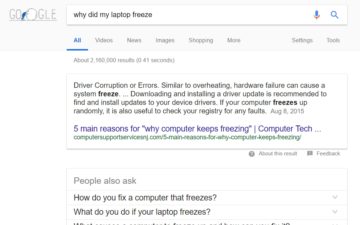
In the Awareness stage, visitors know they have a problem but have not identified the causes and solutions yet.
For example, an entrepreneur’s laptop ceased to boot for the second time in one week.
He does not know what the issue is and what to do to fix it —
Should he:
- Troubleshoot with Microsoft again?
- Send the laptop for repair?
- Get a replacement?
He goes to Google to do some initial research and then makes a decision.
Stage 2: Consideration (Final Research)

In the Consideration stage, the prospect knows the problem and better understand what they need to do. Yet, they need to weigh the options.
Using the same example, our entrepreneur troubleshot with Microsoft and found that the recent update corrupted his Windows OS. But, the laptop he has been using is six years old.
He has decided to buy a new laptop that fits his business needs. He now needs to decide the brand, technical specification, and retailer he’d like to purchase from.
At this stage, content that helps him in these aspects will earn your business his trust (if you’re selling laptops).
Stage 3: Decision (Purchase)

Finally, in the Decision stage, the prospect has decided on one option. However, they want to confirm that the decision is indeed the right one.
In this stage, content that reaffirms your business’s authority and service reliability will push your ready-to-buy prospect into buying from you. Content that offers social proof, like reviews and case-studies from previous happy customers, work well.
To back this with data, 72 percent of buyers use Google during the awareness stage and 70 percent return to Google again during the consideration stage. 52 percent read more than 8 articles from the business they chose to do business with.
But how do you identify which stage your visitor is in?

Search Query Intent
One way is to use search query intent – inferring the buyer’s journey based on the keywords people are using to search.
For example, “hotels near me” suggests that the visitor is in the consideration stage, looking for hotels in his or her area.
Analytics data
Another way is to make an educated guess based on analytics from your website, CRM, and email marketing software.
For instance, if a visitor has clicked on “How ABC Web Host Helped Famous Business Get More Customers” in your email newsletter, after checking out the product landing page 23 times the past week, they are likely ready to buy from you.
#4. You hard-sell without building trust

Would you buy from a stranger who tries to hard sell you outside the mall?
No? Why not?
People buy from businesses they trust. Content that educates makes people 131 percent more likely to buy. This is central to the inbound methodology (in content marketing), which emphasises on educating and advising your visitors.
When you do so, you position your business as an authority and become a trusted advisor to potential customers.
Believe it — or not — people trusted a business more one week after reading a business’s content, rather than immediately. So, take the time to nurture your visitors into leads.
Don’t hard sell them immediately, unless you want them to flee to your competitors.
#5. You use pointless buzzwords and beat around the bush

The average reader skims an article. They first scan through your article to get the gist of your content and then decide whether to read it in-depth.
You need to write your article in a way that helps them with that.
Here’s what you need to do…
Action: How to write for readers and skimmers?
1. Use plain conversational language
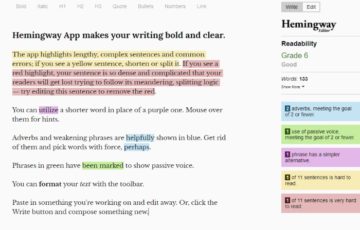
Most people read at third-grade level (7 to 8 years old), while roughly 50 percent read at an eighth-grade level (14 to 15 years old). Even those able to digest academic material hate reading at a technical level.
That’s why conversational articles written in plain language do well.
So, keep your article’s readability at 9th grade and below.
Copy-and-paste your article into the Hemingway App to check your writing’s grade level.
Alternatively, use the Flesch-Kincaid scale to measure how easy your article is to read. The Yoast SEO plugin has that built in. Any score above 60 is easily understood by the average 13 to 15-year-old.
Nonetheless, don’t worry about not meeting the readability score. If your article has to use business-specific and technical terms, the score will naturally be lower.
But, always keep your writing simple. Cut away unnecessary jargon and buzzwords that don’t add to the article.
2. Use Active Voice (instead of Passive Voice)

Consider these sentences…
“It was found by Harvard researchers that one in 1000 sheep get vivid nightmares.” (Passive)
“Researchers at Harvard found that one in 1000 sheep get vivid nightmares.” (Active)
Active voice sounds less stuffy, doesn’t it?
Use active voice to communicate ideas concisely. Active sentences also flow better in your reader’s head.
3. Break your article up with subheadings
By breaking your article with subheadings, you help skimmers find the sections they’re most interested in. Using H2, H3, and H4 subheadings also help search engines identify important points in your content.
Note: H1, H2, H3, H4 and more are HTML tags.
4. Keep sentences and paragraphs short
Again… people skim articles. Short sentences and paragraphs are easier to digest. Walls of text in a paragraph scare readers off.
Of course, vary the length of sentences and paragraphs to break the monotony.
5. Use bullet points
- People are lazy
- Bullet points keep information simple
- Get it?
#6. Your blog is cluttered, which makes reading a nightmare

Remember this scathing letter? Visitors decide within the first 10 to 20 seconds whether to stay or leave your website.
Assuming that site speed isn’t an issue, here are two best practices that improve your article’s readability.
Take Action: How to unclutter your business blog?
1. Cut distractions
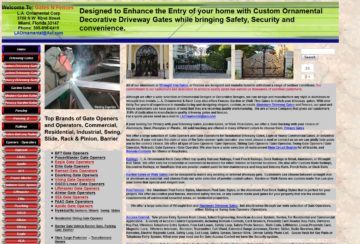
Make use of white space to draw attention to your article text. After all, your article is the focus.
Consider using a blog layout without a sidebar. If you have to use a sidebar, remove irrelevant and distracting elements. Ideally, your sidebar should only have one relevant offer and maybe a form for email subscribers.
Also, move your navigational menu to the top. And, move the less important links to the footer.
2. Optimise text and layout for readability
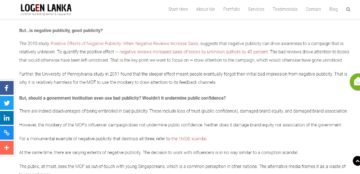
Your article text should be no more than 75 characters per line, but ideally 50 to 60 characters each line.
If the line of text is too long, readers will find it hard to scan the text. Their eyes will have to physically move left to right too often, causing them to lose focus.
Try reading the text below, from one side of your computer screen to the other, to get what I mean.
If the line is too short, you interrupt reading rhythm, causing readers to jump to the subsequent line prematurely. This makes them miss out some important points you make.
#7. There are too many CTAs and Ads vying for attention
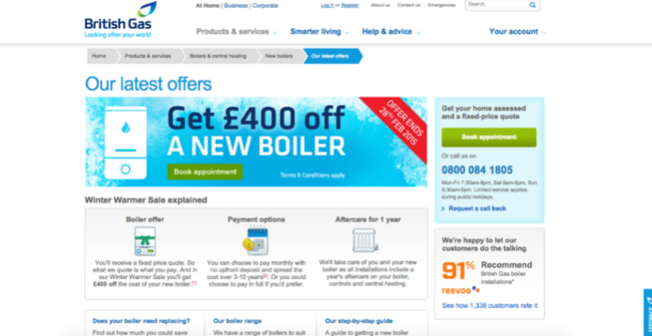
As mentioned, 96 percent of visitors are not ready to buy on their first visit. Furthermore, 74 percent of visitors get frustrated with offers and ads that have nothing to do with their interests.
So, be strategic about your call-to-action (CTA) ads and text offers.
Remember, you want visitors to focus on your article first. Direct them to your CTA only later on.
Take Action — Be strategic with your offers
Cut all irrelevant ad banners on your blog content and sidebar.

You want your readers to read your amazing article, and not get annoyed by five different product ads that aren’t relevant to them. In the middle and end of the article, drop a highly-relevant call-to-action.
If you’re a cosmetics company and your article is about picking the correct foundation colour, your call-to-action might be, “Identify the best foundation colour for your skin tone with this checklist!”. This is relevant to the current reader and they will likely leave their email in exchange for your checklist.
Also, be strategic about your pop-up ads.
Having one pop-up to subscribe to your mailing list might be okay. But, imagine three pop-ups while your reader is reading…
That’s a no-no.
The bottom line — add value to your reader’s life
The seven reasons reveal why people refuse to read your articles beyond 20 seconds. And, the action steps will help you retain your visitors, and turn them into leads.
Remember, consider your target customers first and provide them with value. Position your business as their trusted advisor and expert.
Help them, and they will do business with your business.
Let me know what you think.



